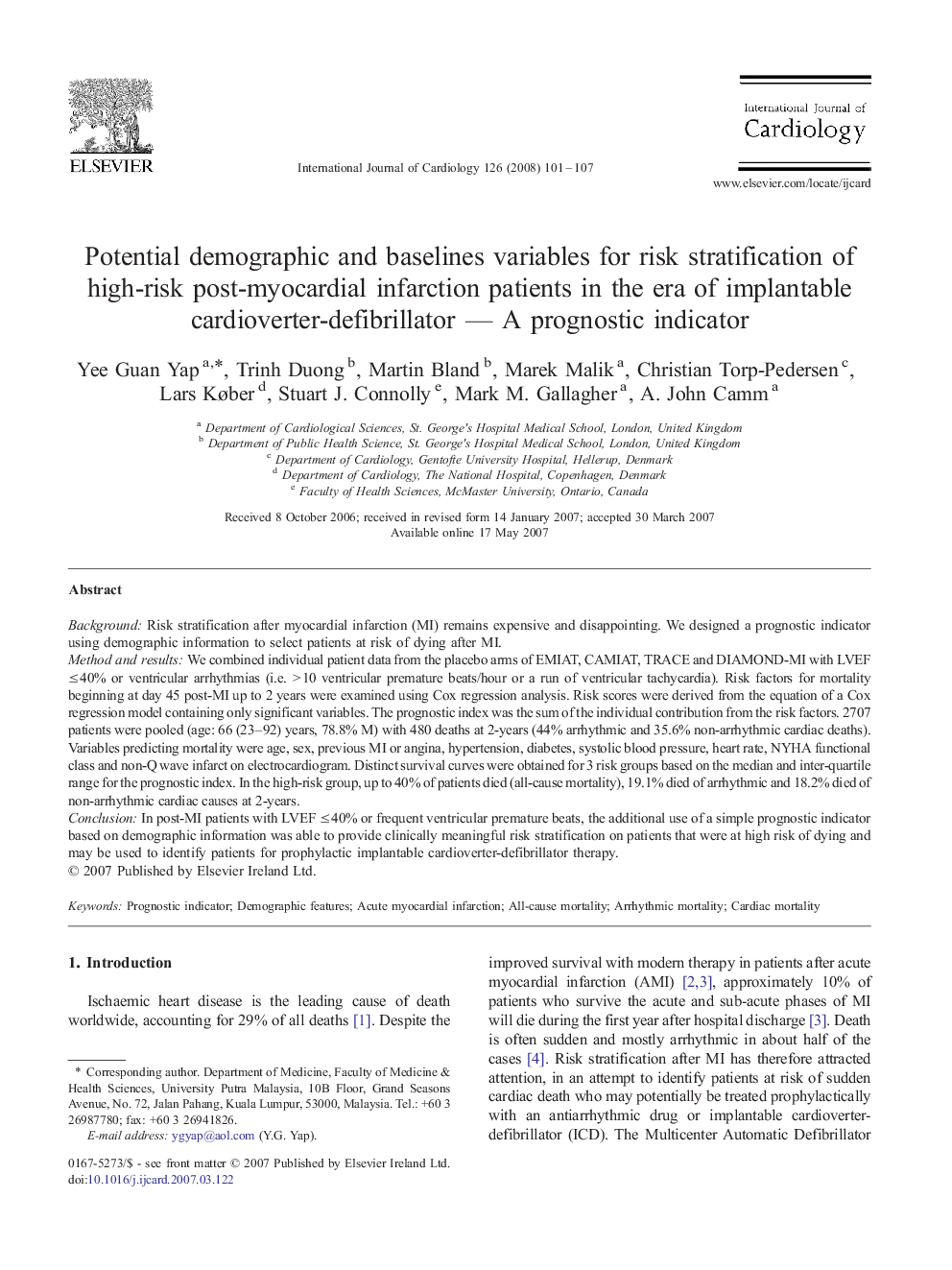| Article ID | Journal | Published Year | Pages | File Type |
|---|---|---|---|---|
| 2934357 | International Journal of Cardiology | 2008 | 7 Pages |
BackgroundRisk stratification after myocardial infarction (MI) remains expensive and disappointing. We designed a prognostic indicator using demographic information to select patients at risk of dying after MI.Method and resultsWe combined individual patient data from the placebo arms of EMIAT, CAMIAT, TRACE and DIAMOND-MI with LVEF ≤ 40% or ventricular arrhythmias (i.e. > 10 ventricular premature beats/hour or a run of ventricular tachycardia). Risk factors for mortality beginning at day 45 post-MI up to 2 years were examined using Cox regression analysis. Risk scores were derived from the equation of a Cox regression model containing only significant variables. The prognostic index was the sum of the individual contribution from the risk factors. 2707 patients were pooled (age: 66 (23–92) years, 78.8% M) with 480 deaths at 2-years (44% arrhythmic and 35.6% non-arrhythmic cardiac deaths). Variables predicting mortality were age, sex, previous MI or angina, hypertension, diabetes, systolic blood pressure, heart rate, NYHA functional class and non-Q wave infarct on electrocardiogram. Distinct survival curves were obtained for 3 risk groups based on the median and inter-quartile range for the prognostic index. In the high-risk group, up to 40% of patients died (all-cause mortality), 19.1% died of arrhythmic and 18.2% died of non-arrhythmic cardiac causes at 2-years.ConclusionIn post-MI patients with LVEF ≤ 40% or frequent ventricular premature beats, the additional use of a simple prognostic indicator based on demographic information was able to provide clinically meaningful risk stratification on patients that were at high risk of dying and may be used to identify patients for prophylactic implantable cardioverter-defibrillator therapy.
